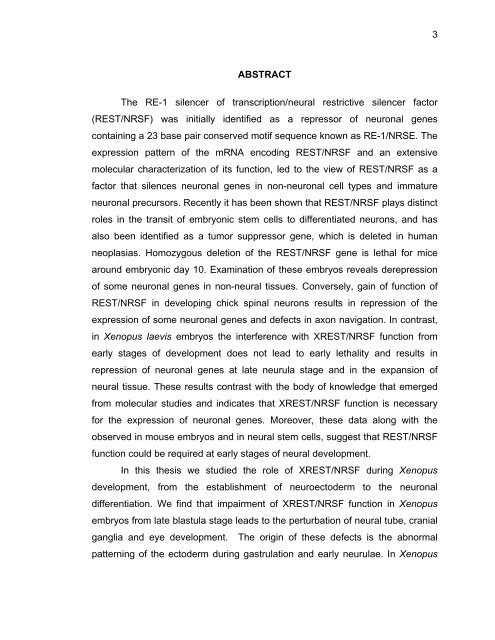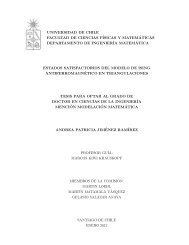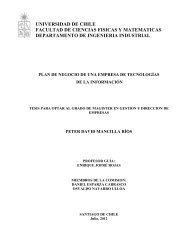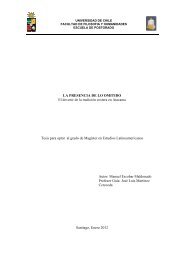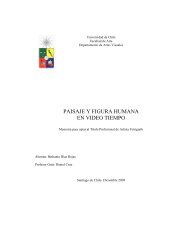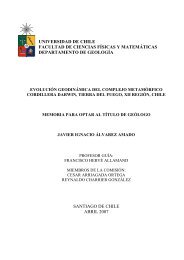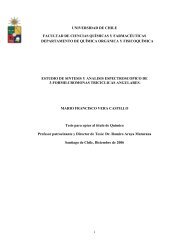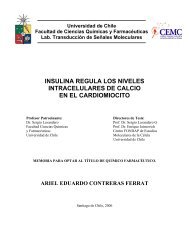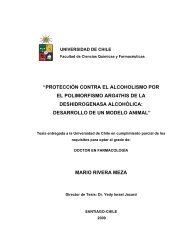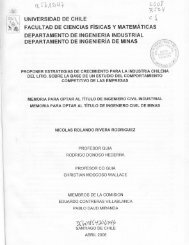Participación del Factor Silenciador Neuronal Restrictivo - Tesis ...
Participación del Factor Silenciador Neuronal Restrictivo - Tesis ...
Participación del Factor Silenciador Neuronal Restrictivo - Tesis ...
Create successful ePaper yourself
Turn your PDF publications into a flip-book with our unique Google optimized e-Paper software.
ABSTRACT<br />
The RE-1 silencer of transcription/neural restrictive silencer factor<br />
(REST/NRSF) was initially identified as a repressor of neuronal genes<br />
containing a 23 base pair conserved motif sequence known as RE-1/NRSE. The<br />
expression pattern of the mRNA encoding REST/NRSF and an extensive<br />
molecular characterization of its function, led to the view of REST/NRSF as a<br />
factor that silences neuronal genes in non-neuronal cell types and immature<br />
neuronal precursors. Recently it has been shown that REST/NRSF plays distinct<br />
roles in the transit of embryonic stem cells to differentiated neurons, and has<br />
also been identified as a tumor suppressor gene, which is <strong>del</strong>eted in human<br />
neoplasias. Homozygous <strong>del</strong>etion of the REST/NRSF gene is lethal for mice<br />
around embryonic day 10. Examination of these embryos reveals derepression<br />
of some neuronal genes in non-neural tissues. Conversely, gain of function of<br />
REST/NRSF in developing chick spinal neurons results in repression of the<br />
expression of some neuronal genes and defects in axon navigation. In contrast,<br />
in Xenopus laevis embryos the interference with XREST/NRSF function from<br />
early stages of development does not lead to early lethality and results in<br />
repression of neuronal genes at late neurula stage and in the expansion of<br />
neural tissue. These results contrast with the body of knowledge that emerged<br />
from molecular studies and indicates that XREST/NRSF function is necessary<br />
for the expression of neuronal genes. Moreover, these data along with the<br />
observed in mouse embryos and in neural stem cells, suggest that REST/NRSF<br />
function could be required at early stages of neural development.<br />
In this thesis we studied the role of XREST/NRSF during Xenopus<br />
development, from the establishment of neuroectoderm to the neuronal<br />
differentiation. We find that impairment of XREST/NRSF function in Xenopus<br />
embryos from late blastula stage leads to the perturbation of neural tube, cranial<br />
ganglia and eye development. The origin of these defects is the abnormal<br />
patterning of the ectoderm during gastrulation and early neurulae. In Xenopus<br />
3


